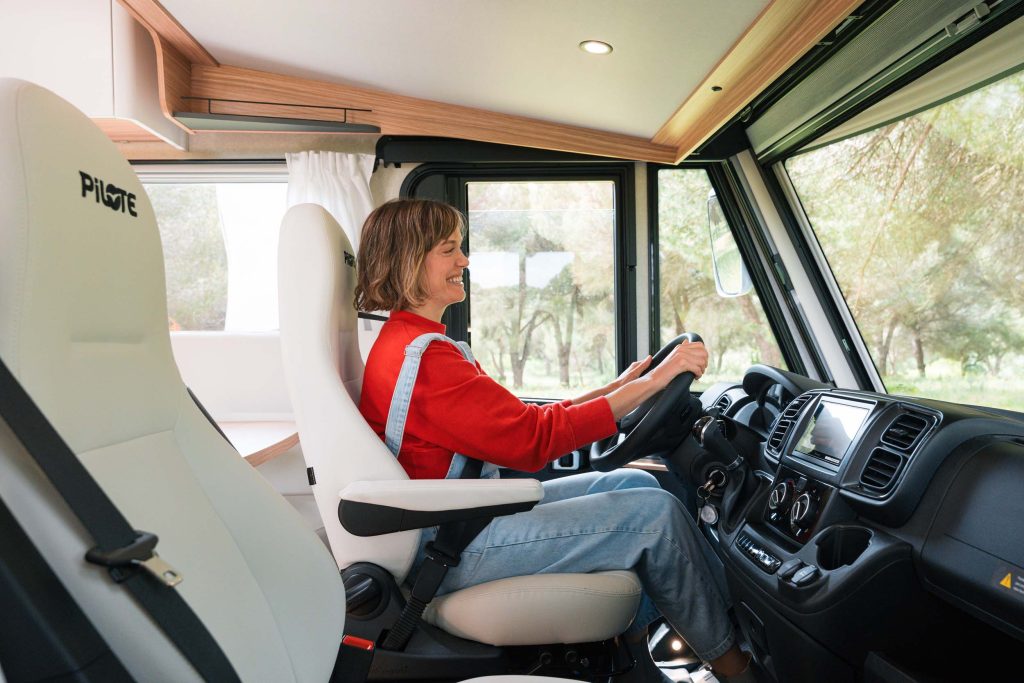AI Summary
Ready to pilot your own rolling home? Good news: after getting around the initial learning curve, driving a campervan or RV is actually easier than what it looks and a lot more fun. With a few quick checks you will feel like a road‑trip pro before the playlist even starts.
Check your licence
Most holiday size motorhomes sit inside the weight a regular car licence already covers. Just check the figures while you are choosing your booking and if you need to confirm it on the local, check the plate by the driver door.
- Europe Every Indie Campers van is under 3 500 kg so Category B is enough.
- United States All Indie Campers rentals stay under 26 000 lb so a normal state licence also works.
- Australia and New Zealand Indie Campers vehicle are all under 4.5 t, which a standard car licence covers as well.
Choosing something heavier is rare, but if you do, some US states or European countries may need a higher licence class. Keep this in mind when renting from marketplace listings.
Before you start your road trip
After picking up your RV, the excitement is big to hit the road right away, but before you do, remember the parking lot is a perfect classroom. Spend ten calm minutes, or how many you need, getting comfortable and you will thank yourself later. Follow the tips below and you will feel like a pro in no time.
Seat and wheel
Sit high and close enough that your knees stay slightly bent with the brake fully pressed. Good posture means less fatigue, better control and more fun.
Mirrors
Each side has two mirrors.
• A large flat mirror on top shows the traffic lane, similar to your everyday drive.
• The smaller curved mirror on the bottom shows the full side of the van and the rear wheel. This mirror is your best friend for parking, corner and tight spots. Point it so you always see a slice of the campervan’s own side, this way a quick glance tells you if you will clear an obstacle.
Controls
Find lights, wipers, cruise control, and the reversing camera screen… make sure you know where the basics are! If available in your camapervan or motorhome, pair your phone to the radio so the road‑trip soundtrack is ready.
Secure the interior
Before departing make a quick tour, or better yet ask help for your copilots: close roof vents, windows, and cupboard latches, and turn the gas bottle off. Give each door a shake; nothing should rattle.
On the road
Before you start after you stay parked for a long time, remember to run a quick mental checklist before rolling: windows closed, gas off, cabinets locked, mirrors right.
Once you’re on the road, here are the best tips to keep in mind:
• Drive a few miles per hour slower, especially during the first days while you get the feel.
• Take corners wide. In bigger motorhomes, the rear swings in and can bump posts or pumps.
• Use both mirrors before changing lanes or passing cyclists.
• Keep a reasonable distance behind the vehicle ahead. Extra weight means longer stopping distance.
• Watch height boards at fuel stations, car parks, and tree branches. Roof scrapes are the most common first‑timer damage.
• When refuelling, pay extra attention: check the cap to see which fuel your camper needs. Diesel models have a blue cap for DEF (AdBlue), if the light appears make sure to also refill it, if you are not used to it station staff will help if you ask
• For the best peace of mind choose the most complete protection plan when you book.
Parking and sleeping
Parking rules can change from one country(or even one town) to the next, a bit like airline baggage rules, so look them up before you roll in and the landing will be smooth.
• United States Most national and state parks cap RV length at 30 ft. Commercial RV parks are flexible, and some big‑box stores allow quiet overnight stays if you ask the manager.
• Europe Overnight stays are legal only in campsites, aires, or signed motorhome bays. But rules vary greatly between countries, when in doubt use apps like Park4Night.
• Australia and New Zealand Look for council‑approved freedom‑camping areas and holiday parks near the coast.
Wherever you stop, level the wheels, set the parking brake, and use wheel chocks on slopes.
Pick the van that fits you
| Traveller type | Good first‑timer choice | Why it helps |
|---|---|---|
| Couple or solo | Compact campervan or Class B | Drives like a long family car and fits city parking |
| Family of four to six | Class B Plus or Class C up to 30 ft | Stable chassis, full bathroom, still car‑licence weight |
| Group that wants space | Large Class C in Europe or lightweight Class A in the US | Biggest living room and storage while staying licence friendly |
Unlimited miles, 24‑hour roadside help, and loads of optional extras mean you can travel where you want and how you want with Indie Campers. Start the engine, press play, and let the adventure roll.
